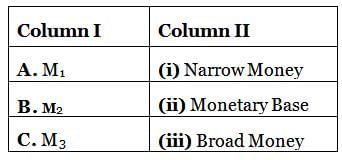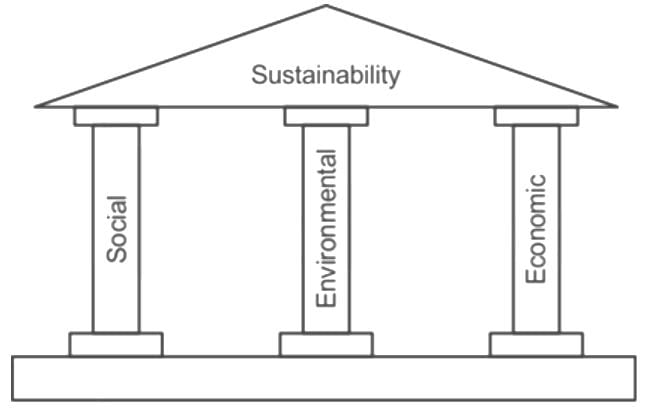Economics: CUET Mock Test - 1 - CUET MCQ
30 Questions MCQ Test CUET Mock Test Series - Economics: CUET Mock Test - 1
A farmer exchanges wheat for cloth.
This system of exchange is referred to as ________
This system of exchange is referred to as ________
Who among the following Economist has written the book 'Value and Capital'?
Which of the following is not included in the parameters of sustainable development?
Which of the following is a method of calculating national income?
I. Value-added method
II. Expenditure method
III. Income method
Select the correct statement related to Alternate marketing channels :
(A) In the alternate marketing channels, Farmers sell their products directly to consumers.
(B) In the alternate marketing channels, Farmers sell their products directly to the Central Government
(C) In the alternate marketing channels, Farmers sell their products to the Middle men
(D) In the alternate marketing channels, Farmer sell their products directly to the whole sale market
Choose the correct answer from the options given below:
______ money refers to the m oney backed by the authority of the government.
In credit money, the money value is less than the commodity value.
‘A’ has a good that ‘B’ wants and ‘B’ has a good that A’ wants. This is referred to as ______ under barter system of exchange.
In the present COVID 19 times, many economists have raised their concerns that Indian economy may have to face a deflationary situation, due to reduced economic activities in the country. Suppose you are a member of the high-powered committee constituted by the Reserve Bank of India (RBI).
You have suggested that as the supervisor of commercial banks, ...............of the money supply be ensured, by the Reserve Bank of India (RBI).
_______ is the agent and adviser to the Government of India.
Loans offered by commercial banks .......... the m oney supply in the economy.
All financial institutions are banking institutions.
M1 = Currency will Public + ______ + Other Deposits with RBI
Value of Money Multiplier ______ with an increase in Cash Reserve Ratio.
Choose the incorrect pair from given below.

Choose from the options given below.
If LRR is equal to 25%, what will be the value of credit multiplier?
What will be the total amount of money created in the system if legal reserves ratio is 20% and primary deposits are ₹ 1,000?
At a given point in time, money multiplier is equal to 10. What will be the value of legal reserve ratio?
Which of the following is / are not an assumption(s) of credit creation process?
(i) Entire banking system is taken as a single unit.
(ii) All transactions are done through banks.
(iii) There is no saving in the economy.
|
8 docs|148 tests
|





















